Phytoconstituents of Withania somnifera unveiled Ashwagandhanolide as a potential drug targeting breast cancer: Investigations through computational, molecular docking and conceptual DFT studies
- PMID: 36201520
- PMCID: PMC9536605
- DOI: 10.1371/journal.pone.0275432
Phytoconstituents of Withania somnifera unveiled Ashwagandhanolide as a potential drug targeting breast cancer: Investigations through computational, molecular docking and conceptual DFT studies
Abstract
Breast cancer is the second most common malignancy in females worldwide and poses a great challenge that necessitates the identification of novel therapeutic agents from several sources. This research aimed to study the molecular docking and molecular dynamics simulations of four proteins (such as PDB: 6CBZ, 1FDW, 5GWK and 2WTT) with the selected phytochemicals from Withania somnifera to identify the potential inhibitors for breast cancer. The molecular docking result showed that among 44 compounds, two of them, Ashwagandhanolide and Withanolide sulfoxide have the potential to inhibit estrogen receptor alpha (ERα), 17-beta-hydroxysteroid -dehydrogenase type 1 (17β-HSD1), topoisomerase II alpha (TOP2A) and p73 tetramerization domain that are expressed during breast cancer. The molecular dynamics (MD) simulations results suggested that Ashwagandhanolide remained inside the binding cavity of four targeted proteins and contributed favorably towards forming a stable protein-ligand complex throughout the simulation. Absorption, Distribution, Metabolism, Excretion and Toxicity (ADMET) properties confirmed that Ashwagandhanolide is hydrophobic and has moderate intestinal permeability, good intestinal absorption, and poor skin permeability. The compound has a relatively low VDss value (-1.652) and can be transported across ABC transporter and good central nervous system (CNS) permeability but did not easily cross the blood-brain barrier (BBB). This compound does not possess any mutagenicity, hepatotoxicity and skin sensitization. Based on the results obtained, the present study highlights the anticancer potential of Ashwagandhanolide, a compound from W. somnifera. Furthermore, in vitro and in vivo studies are necessary to perform before clinical trials to prove the potentiality of Ashwagandhanolide.
Conflict of interest statement
The authors have declared that no competing interests exist.
Figures
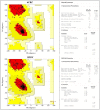
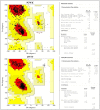
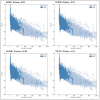

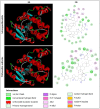
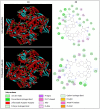



References
-
- Sung H, Ferlay J, Siegel RL, Laversanne M, Soerjomataram I, Jemal A, et al.. Global Cancer Statistics 2020: GLOBOCAN Estimates of Incidence and Mortality Worldwide for 36 Cancers in 185 Countries. CA: A Cancer Journal for Clinicians. 2021;71(3):209–249. - PubMed
MeSH terms
Substances
LinkOut - more resources
Full Text Sources
Medical
Miscellaneous

